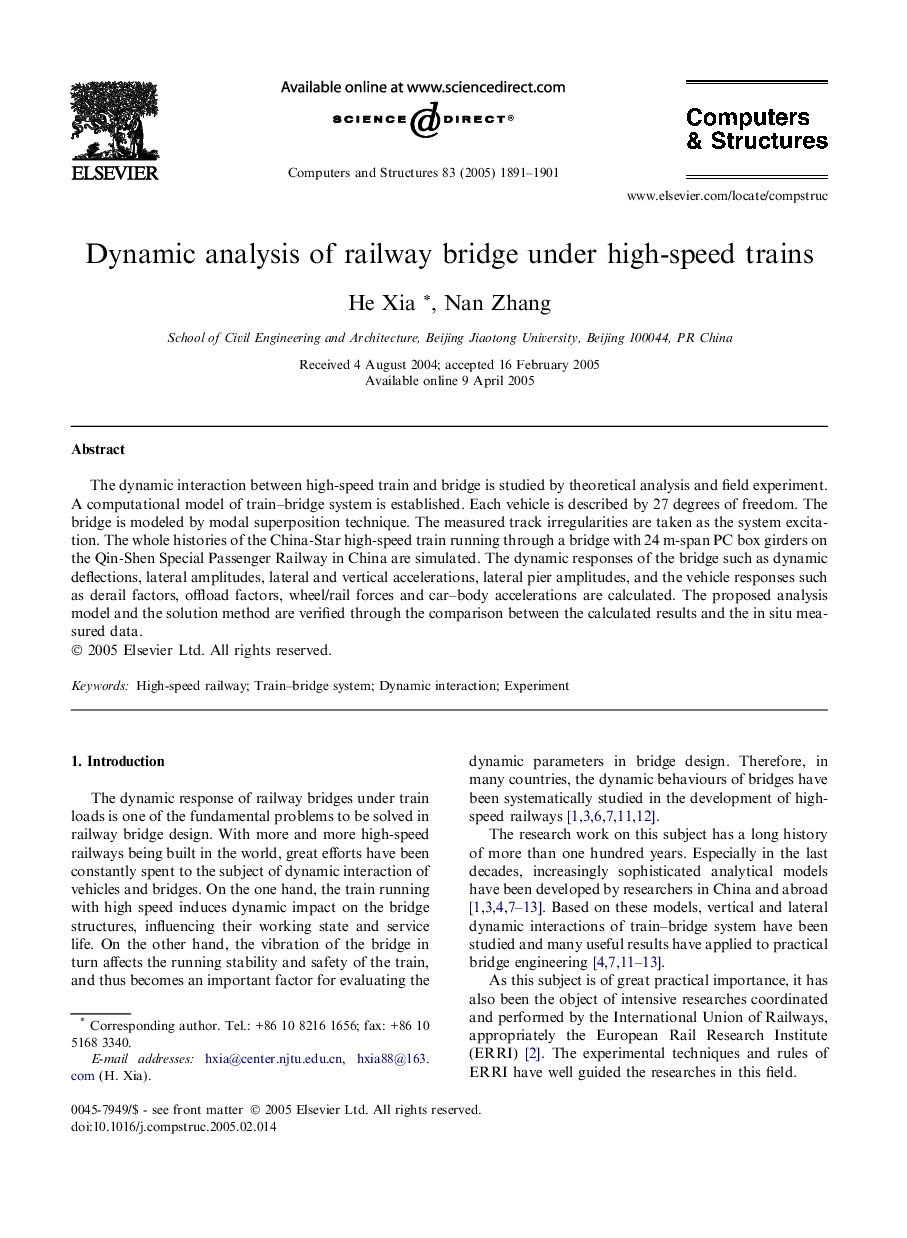| Article ID | Journal | Published Year | Pages | File Type |
|---|---|---|---|---|
| 511408 | Computers & Structures | 2005 | 11 Pages |
The dynamic interaction between high-speed train and bridge is studied by theoretical analysis and field experiment. A computational model of train–bridge system is established. Each vehicle is described by 27 degrees of freedom. The bridge is modeled by modal superposition technique. The measured track irregularities are taken as the system excitation. The whole histories of the China-Star high-speed train running through a bridge with 24 m-span PC box girders on the Qin-Shen Special Passenger Railway in China are simulated. The dynamic responses of the bridge such as dynamic deflections, lateral amplitudes, lateral and vertical accelerations, lateral pier amplitudes, and the vehicle responses such as derail factors, offload factors, wheel/rail forces and car–body accelerations are calculated. The proposed analysis model and the solution method are verified through the comparison between the calculated results and the in situ measured data.
